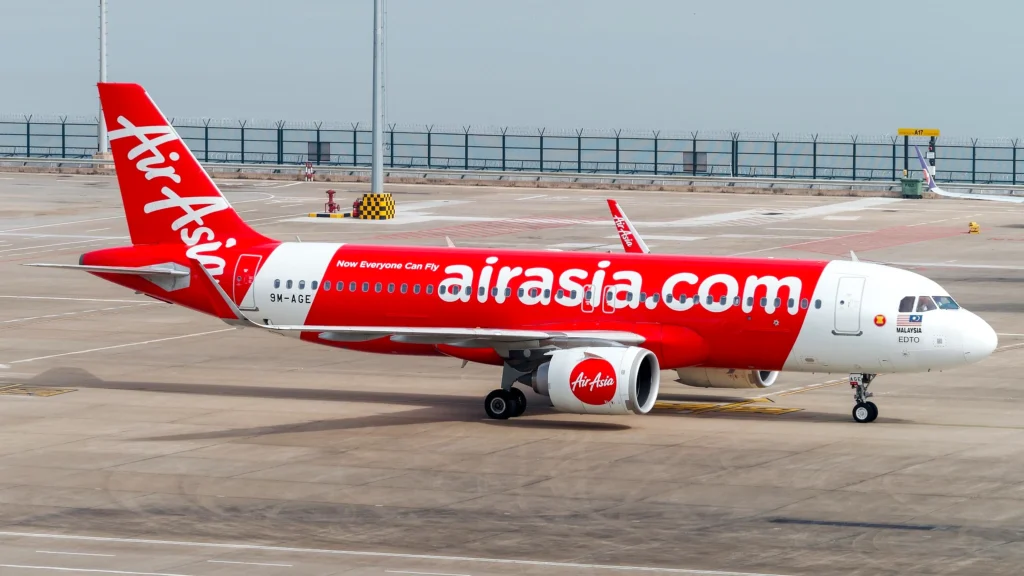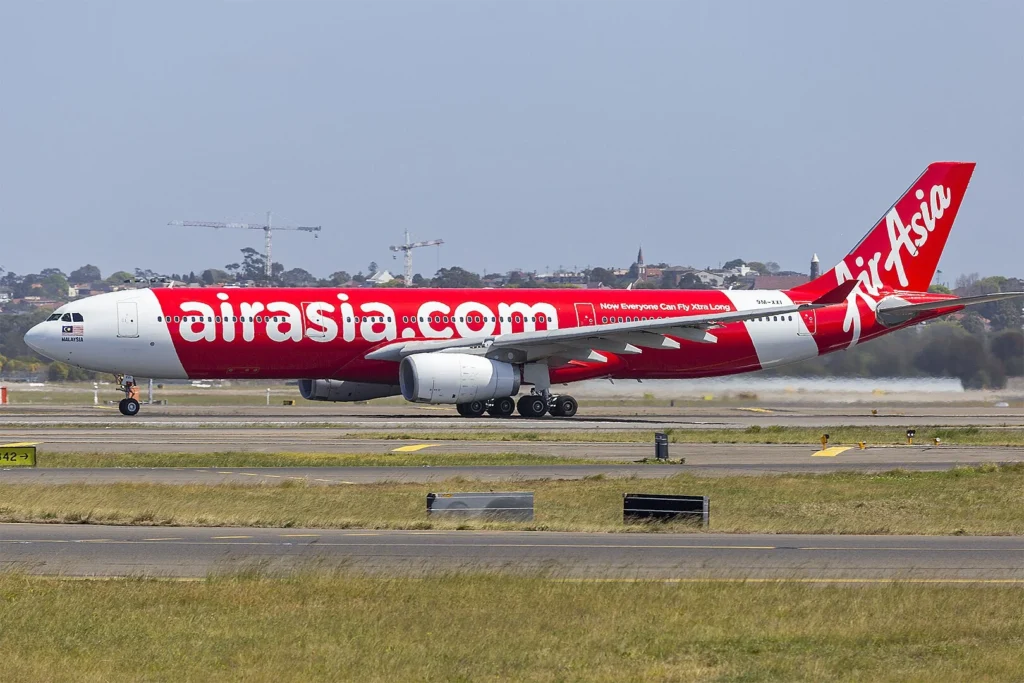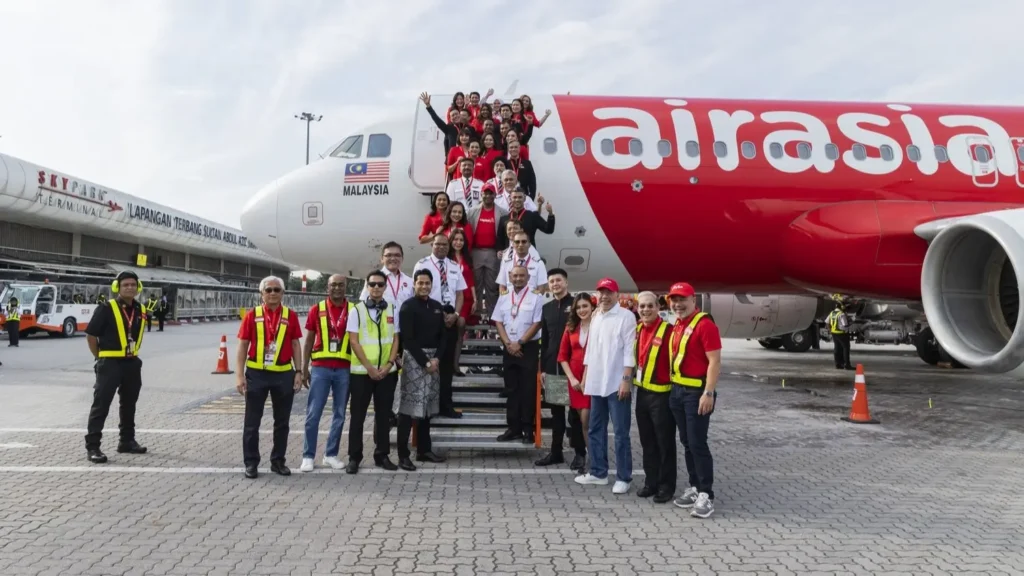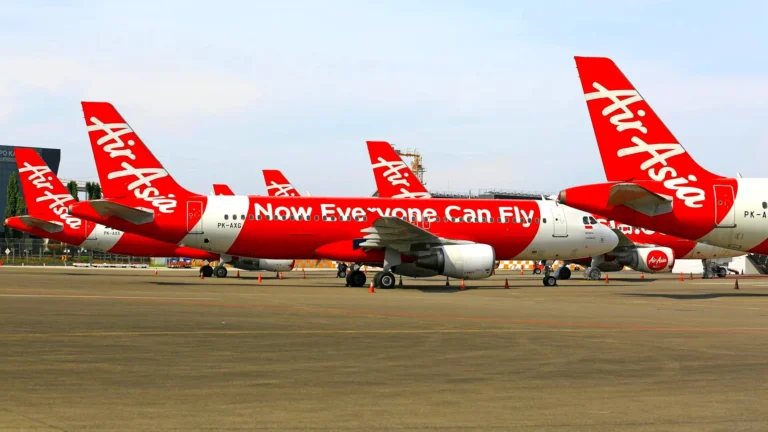KUALA LUMPUR— AirAsia (AK) is preparing to launch a new Gulf hub and resume long-haul services to Europe, including London Gatwick (LGW), as part of its post-pandemic expansion strategy. The move will position the Malaysian low-cost carrier to compete more aggressively on intercontinental routes via a multi-stop model.
The airline is also enhancing connectivity to the Middle East, adding routes to key cities such as Riyadh (RUH) and Dammam (DMM), while evaluating options to reintroduce service to destinations across Eastern and Western Europe.

AirAsia Gulf Hub
AirAsia’s (AK) CEO Tony Fernandes confirmed that the carrier is establishing a Gulf regional hub, leveraging its strategic position to connect Southeast Asia with Europe.
While the exact Gulf airport has not been confirmed, discussions were held at the recent Paris Air Show with regional officials, indicating strong momentum behind the initiative.
Fernandes highlighted the advantages of a Gulf stopover, noting that Europe is a manageable second leg from the region, FT reported.
This network evolution marks a departure from the airline’s traditional point-to-point model, aligning with a more sustainable “multi-hop” framework designed to capture global traffic.
According to Fernandes, approximately 8% of current passengers already use AirAsia’s (AK) network for connections, a number the airline expects to grow significantly.
Despite recent geopolitical instability in the Middle East—prompting some carriers to suspend services—AirAsia (AK) remains committed to the region.
Recent route launches include Kuala Lumpur (KUL) to Riyadh (RUH), Dammam (DMM), and expanded capacity to Jeddah (JED). These routes strengthen AirAsia’s long-term plan to serve as a key transit point between Asia and Europe.

Rebuilding After the Pandemic Setback
AirAsia (AK), headquartered in Kuala Lumpur (KUL), endured significant setbacks during the COVID-19 pandemic, leading to a retraction from several markets and classification as a distressed entity by the Malaysian government.
Now recovering, the airline is embracing growth while navigating the challenges of rising fuel prices and heightened competition.
The recent closure of Jetstar Asia (3K), a Qantas (QF)-owned budget carrier based in Singapore (SIN), illustrates the continued volatility in the Asian low-cost sector.
Fernandes suggested that resistance from certain airports to low-cost operations contributed to the Jetstar shutdown and noted that AirAsia is returning to a Ryanair-style strategy of targeting secondary airports in underserved markets.

Return to Europe via Long-Haul Subsidiary
AirAsia X (D7), the group’s long-haul affiliate, previously operated flights to the UK via London Stansted (STN) and London Gatwick (LGW), as well as Paris Orly (ORY), but halted those services in 2012 due to commercial constraints. Now, a relaunch is in motion, with London Gatwick (LGW) poised as the likely European gateway.
Future targets also include underserved secondary European cities such as Cologne (CGN), Manchester (MAN), Glasgow (GLA), and Dublin (DUB).
These destinations are part of a broader plan to tap into cost-conscious travelers and offer competitive options through strategic airline partnerships and airport connectivity.

Future Outlook
Beyond airline operations, AirAsia Group is investing in fintech (via its Super App), logistics, aircraft maintenance, and aviation consultancy.
While previous plans to list some of these businesses in New York through SPACs have stalled, Fernandes signaled a renewed interest in progressing these ambitions, though specifics remain undisclosed.
As AirAsia (AK) regains momentum, the creation of a Gulf hub and the revival of Europe flights reflect a bold new chapter for one of Asia’s most prominent low-cost carriers.
Stay tuned with us. Further, follow us on social media for the latest updates.
Join us on Telegram Group for the Latest Aviation Updates. Subsequently, follow us on Google News

